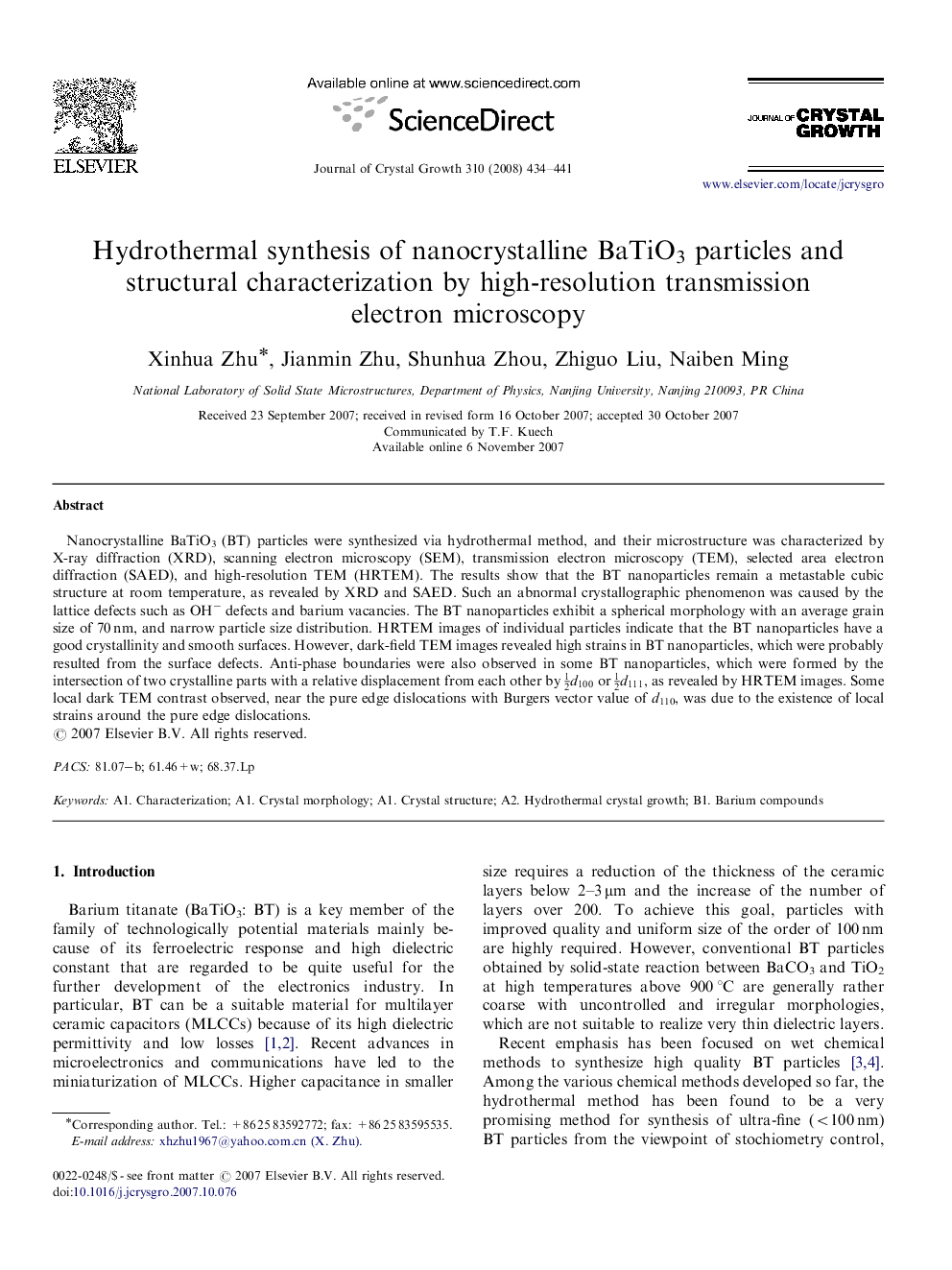| Article ID | Journal | Published Year | Pages | File Type |
|---|---|---|---|---|
| 1795716 | Journal of Crystal Growth | 2008 | 8 Pages |
Nanocrystalline BaTiO3 (BT) particles were synthesized via hydrothermal method, and their microstructure was characterized by X-ray diffraction (XRD), scanning electron microscopy (SEM), transmission electron microscopy (TEM), selected area electron diffraction (SAED), and high-resolution TEM (HRTEM). The results show that the BT nanoparticles remain a metastable cubic structure at room temperature, as revealed by XRD and SAED. Such an abnormal crystallographic phenomenon was caused by the lattice defects such as OH− defects and barium vacancies. The BT nanoparticles exhibit a spherical morphology with an average grain size of 70 nm, and narrow particle size distribution. HRTEM images of individual particles indicate that the BT nanoparticles have a good crystallinity and smooth surfaces. However, dark-field TEM images revealed high strains in BT nanoparticles, which were probably resulted from the surface defects. Anti-phase boundaries were also observed in some BT nanoparticles, which were formed by the intersection of two crystalline parts with a relative displacement from each other by 12d100 or 12d111, as revealed by HRTEM images. Some local dark TEM contrast observed, near the pure edge dislocations with Burgers vector value of d110, was due to the existence of local strains around the pure edge dislocations.
